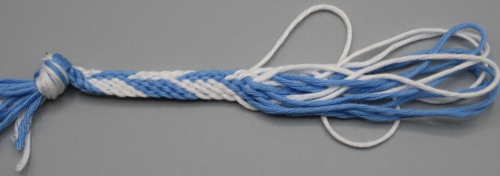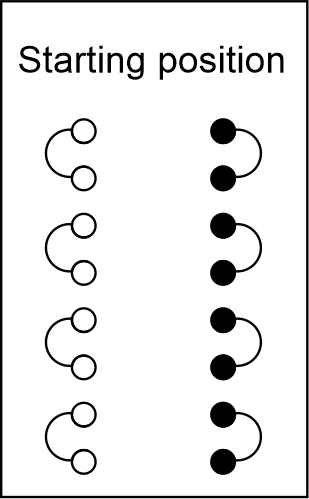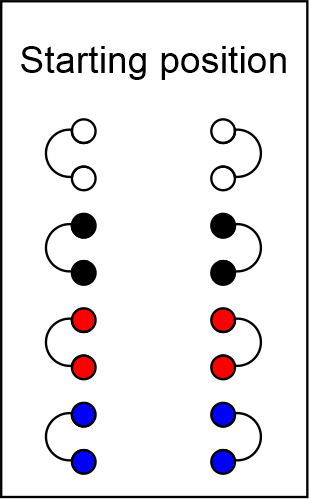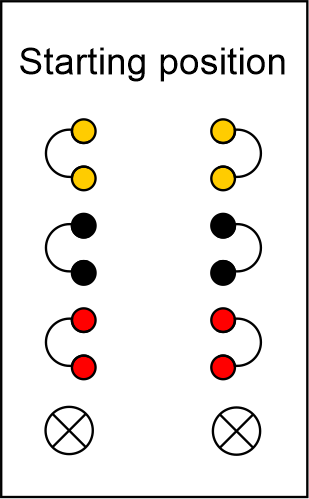A Chevron Braid

This braid introduces twining. At the end of the sequence the loops are twined (twisted, reversed). You can use your other hand to help with this. With practice, you can learn to twist the loops on both hands at the same time. In this video I demonstrate the two ways of achieving twining (twisting) as used in this pattern. Note that when you do the braid you execute the full sequence before twining again, the video above only demonstrates twining (don't worry, there's a video of the whole thing further down the page).

Written instructions
- Push the loop on A right a bit towards the palm. Then put A right through D, C, B left and take A left unreversed. When you are done, the loop you just picked up is closer to the tip of your index finger and the original loop is closer the palm.
- Move the loops on the left up.
- D left takes the outer loop (closer to the fingertip) of A right.
- Push the loop on A left a bit towards the palm. Then put A left through D, C, B right and take A right unreversed.
- Move the loops on the right up.
- D right takes the outer loop of A left.
- D left and D right exchange.
- Twine (twist) all loops.
Is it all gibberish? Watch a video.
Variations
The Crosse Billit

This is a 17th century variation. The braiding pattern is exactly the same as for A Broad Lace Chevron, but the original setup is different.

Narrower stripes

There is no historical precedent, but if you want to play around, you can set up your loops differently and get narrower stripes. You can use two colours or go wild and try four colours. This braid might work out nicely in an ombre pattern, for example brown-red-orange-yellow.


Six loops

This braid also works with less loops. I leave it to you to figure out how to do it. It might also be smarter to place the loops on B, C and D and leave A free, so you won't have to shuffle two loops on one finger.

Still up for a challenge? Do you want to try something strange?. It is not necessarily any more difficult, but definitely different from anything else.